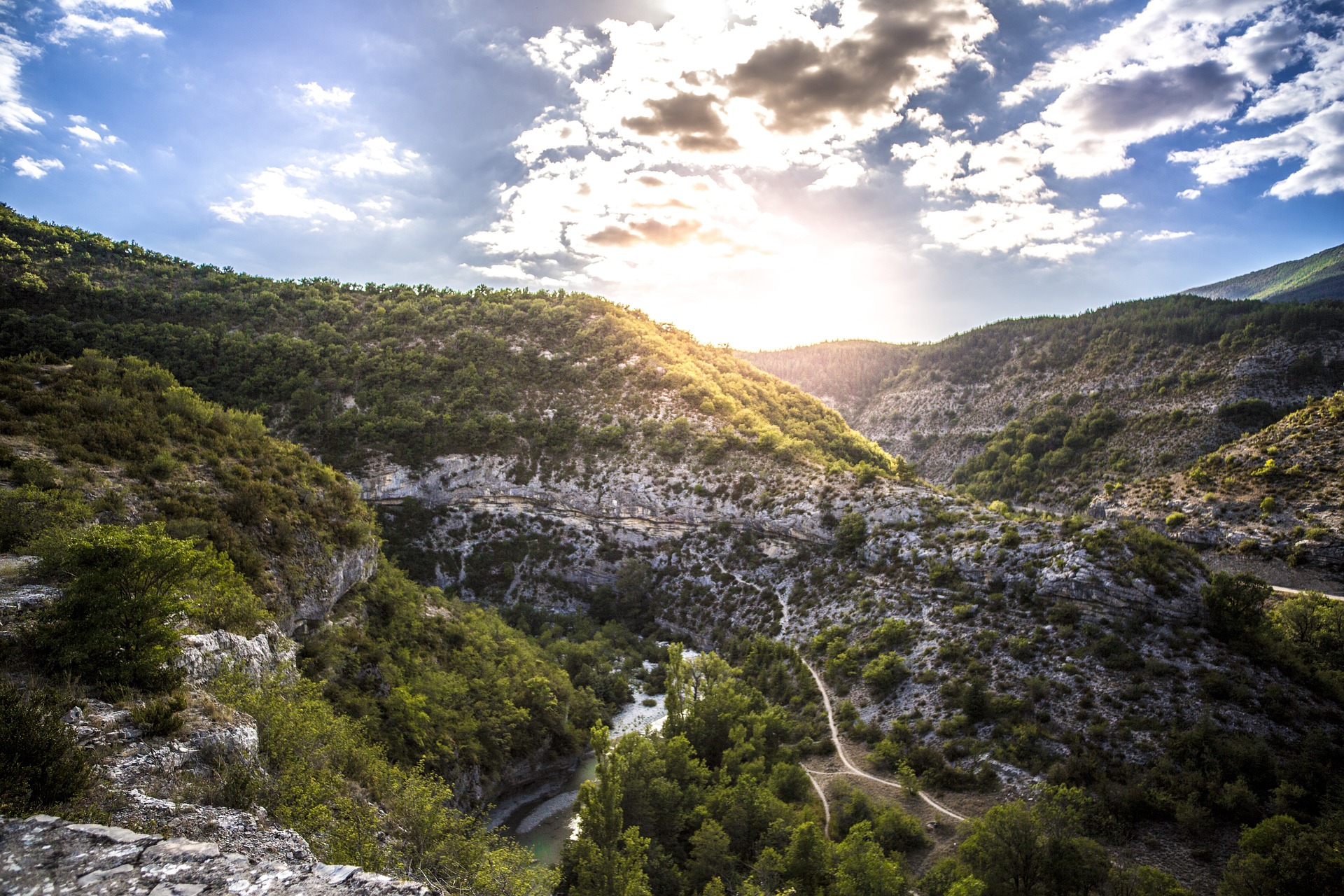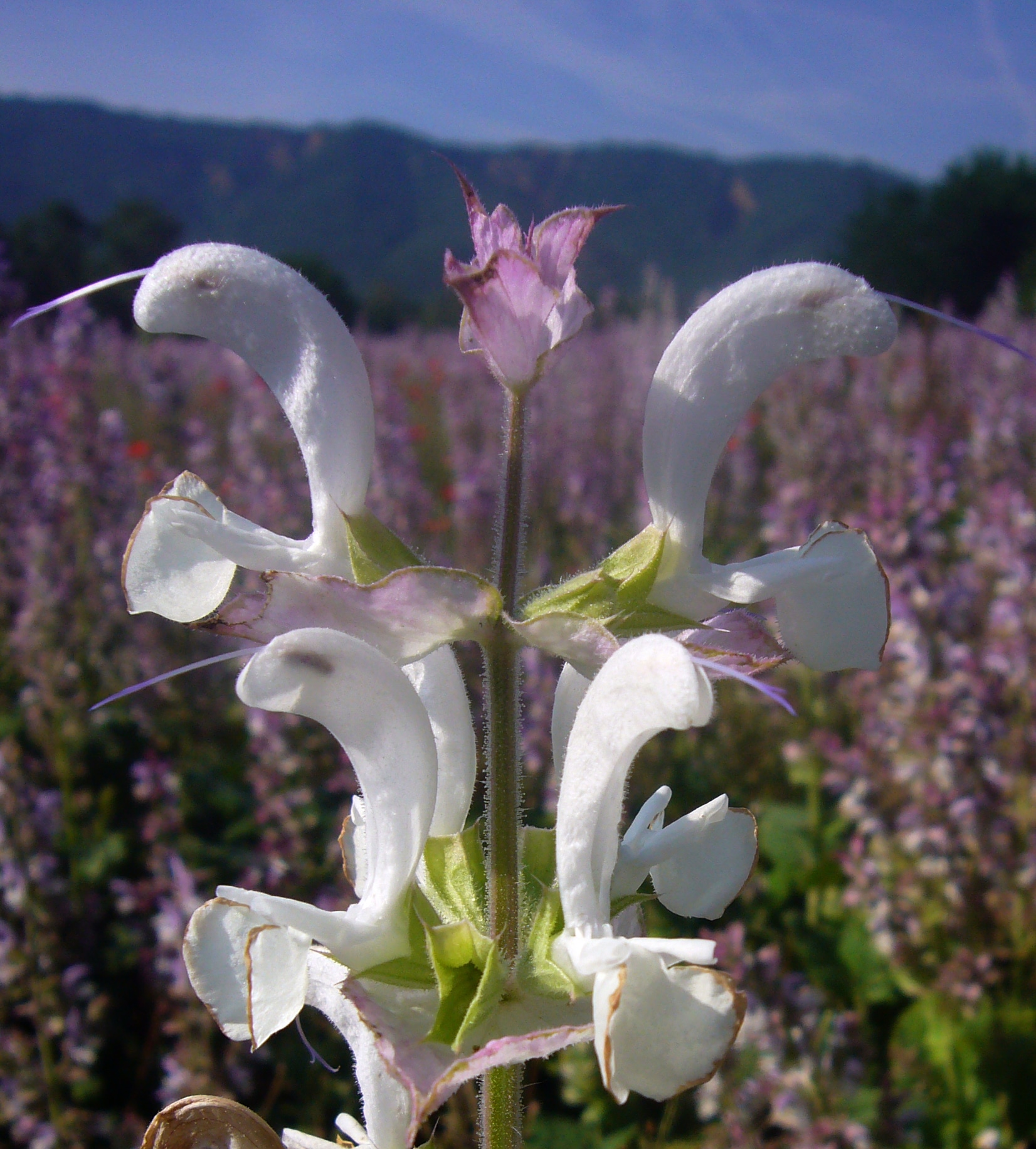
Yves and I spend a few days at Marcel’s place before heading off again through the mountains. No hallucinogenic plants in sight, but a fabulous encounter that will remain engraved in my memory. On the edge of a stony plateau, a rich scent of muscat or perhaps pineapple wafts through the air. In a colorful field grow thousands of strange plants with broad embossed leaves, bearing long scythe-shaped flower stalks, pale blue and white, tinged with yellow and mingled with bracts[1] purple bracts. I’ve never seen anything like it, nor smelled anything like it. As I caress the inflorescence, my hand is covered with a viscous substance that emits an exotic fragrance. I can hardly believe my senses. This plant is an apparition from another world. Marcel will enlighten me later: it’s clary sage, a fragrant Labiatae used in the perfume industry as a fixative, in the form of essential oil. Originally from the Near East, it is still grown in the Digne region, distilled and shipped to Grasse. Later, I managed to get hold of some seeds to distribute to my friends, so that they could enjoy watching this wonderful plant bloom and become intoxicated by its fragrance.
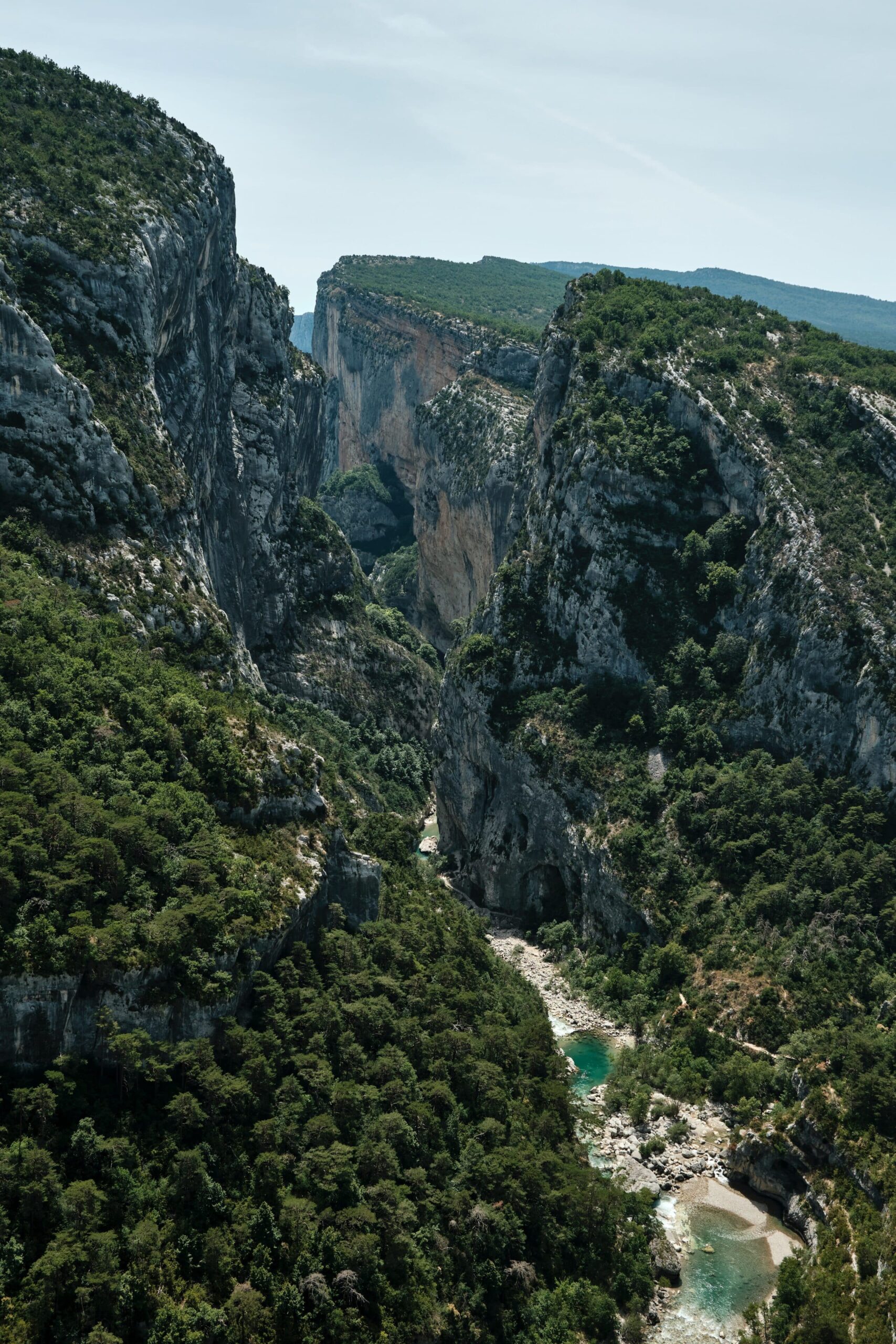
For several days, we walk through landscapes that are so beautiful they make you weep. Modest watercourses bathe the foot of impressive “roubines”.[2]. Slender poplars mark the site of ancient “campaigns” whose ruins are little more than piles of stones. We can still make out the outlines of abandoned fields on the mountainsides, poorly demarcated by low walls of crumbled stone or vague hedges. Everything here bears the trace of man’s ancient presence. Settled more than 3,000 years ago by the Ligurians, these superb but fierce mountains enjoy a harsh climate. Winters are cold due to the altitude and frequent mistral winds. Summer is Mediterranean and dry. Often, not a drop of rain touches the ground between June and September, apart from one or two violent storms that dump more water in a few hours than during the rest of the year. Spring and autumn are the only seasons when plants have any chance of growing. On the other hand, the sun shines here more than anywhere else in France.
In the past, peasants lived self-sufficiently on hardy cereals: a little wheat on the best soils, rye and einkorn (sometimes called “petit épeautre”), which was mainly used to make soups. Added to this were legumes: lentils, chickpeas and “jarosse” or square peas, a forgotten plant that I would find again in Ethiopia. A few vegetables and a couple of fruits rounded out these frugal meals, in particular pears, which were eaten cooked like potatoes, unknown in these remote regions until the beginning of the last century. The “perdrigones” plums, pitted, peeled and dried on racks, provided the “pistoles”. These luxury prunes, marketed from Brignoles in the Var, were already a favorite treat of King Henri III. Together with these plums and the occasional sale of a few sheep, wild lavender was the only source of financial income for the inhabitants. Lavender production expanded in the 19th century with the rise of the perfume industry in Grasse, near Nice. The essential oil of “Barrême lavender” was bought at a high price.[3] “Each hamlet had its own distillery, with mobile stills criss-crossing the countryside.
As soon as means of transport were developed, and following the terrible bloodletting of the Great War in which thousands of young men disappeared, the over-exploited mountains were rapidly depopulated. By the 1930s, all that remained was a handful of isolated dwellings, where once every inch of land had been ploughed or grazed, leading to ecological disasters and human tragedies long before. The village of Barrême, like many others, was repeatedly swept away by the floods of the Asse, swollen by storm rains that were allowed to run unchecked down the almost completely deforested slopes. Natural vegetation acts like a huge sponge, absorbing rainwater rather than letting it run off, and gradually releasing it. The state had to take action, forcing the reforestation of the southern Alps. In some cases, the army had to be called in. Now nature is reclaiming its rights and the balance is slowly returning. But it has been badly damaged, and it will be several centuries before the white oak forests that once covered these mountains with a thick mantle are green again.
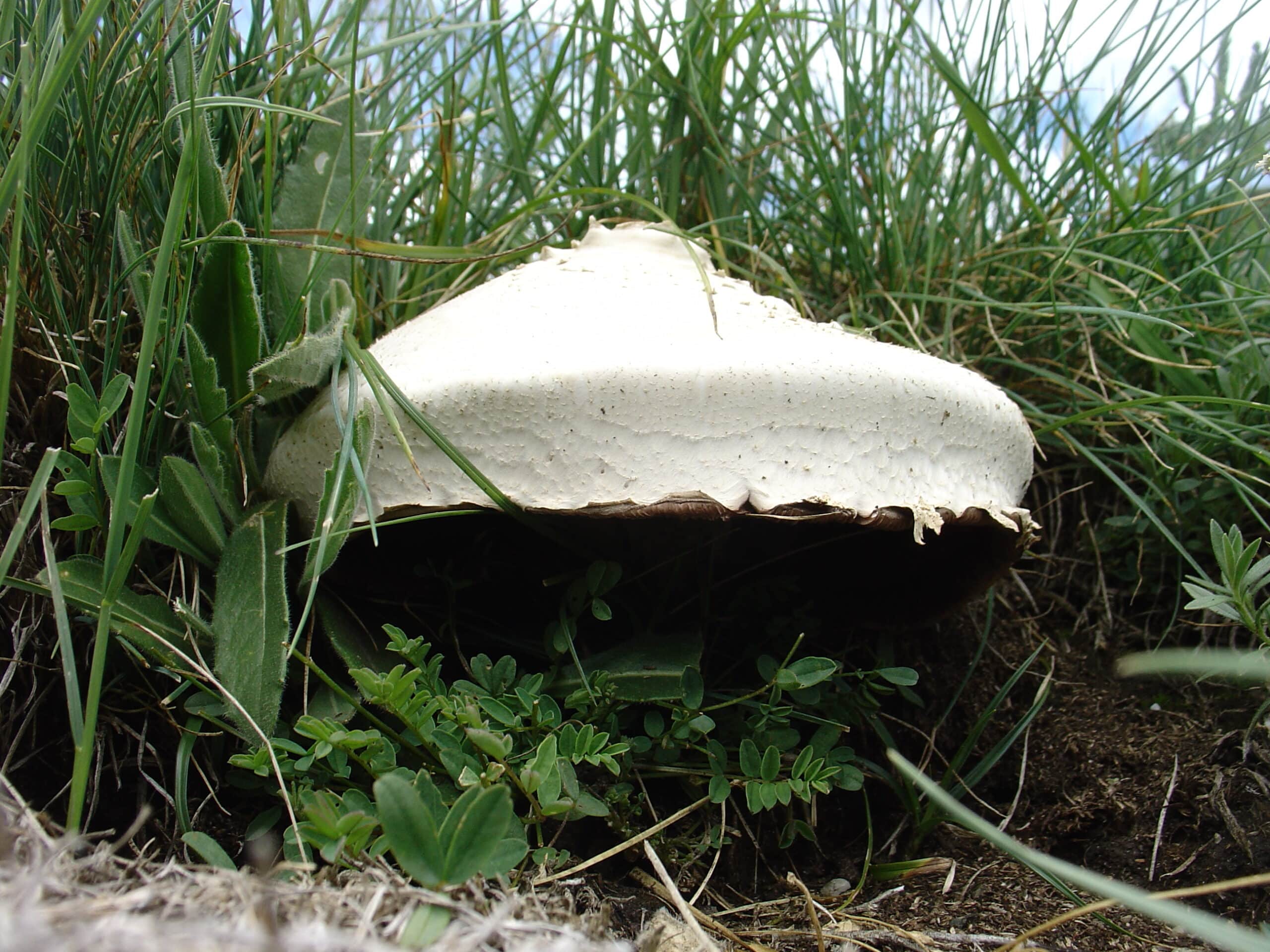
We pass through majestic gorges, where a jade-coloured stream flows over a natural tufa bridge. A heather cock emerges from a box tree less than three meters from us. At the pass that leads to the Vallée de Blieux, we are stunned. In front of us, a circle of giant mushrooms has just appeared! Around a circumference some six metres in diameter, thirty or so mushrooms are growing, each almost forty centimetres high, with caps bigger than dinner plates. I’ve seen and harvested all kinds of mushrooms in my time, but never one so big! They look like meadow roses from Lewis Carroll’s imagination. And this round one is so perfect… We pick up a few specimens, hoping they’re edible, then hurry back down as the storm threatens. It catches up with us just before Robert and Zéphirine’s house, where we arrive soaking wet. As for our mushrooms, the verdict was terrible:
– These are devil’s mushrooms. Above all, leave them alone, they’re dangerous.”

Discover our online course designed by François Couplan, an internationally recognized expert in ethnobotany with over 50 years’ experience. With 30 modules, 120 courses and high-quality theoretical instruction complemented by field courses, this unique three-year training program will enable you to become a professional in the uses of plants. Accessible to all, it explores in depth the relationship between man and plants, opening up exciting professional opportunities. Join us to deepen your knowledge, explore the plant world and develop a rewarding relationship with nature.
The truth would come out later: they were indeed agarics, immense “rosés”. They had simply grown on a resting place, i.e. a spot sheltered from the wind, just below a pass where the ewes used to lie down and abundantly smoke the ground with their droppings. The mushrooms thrived there and grew inordinately. So they were perfectly edible, and we missed a delicious, hearty meal…
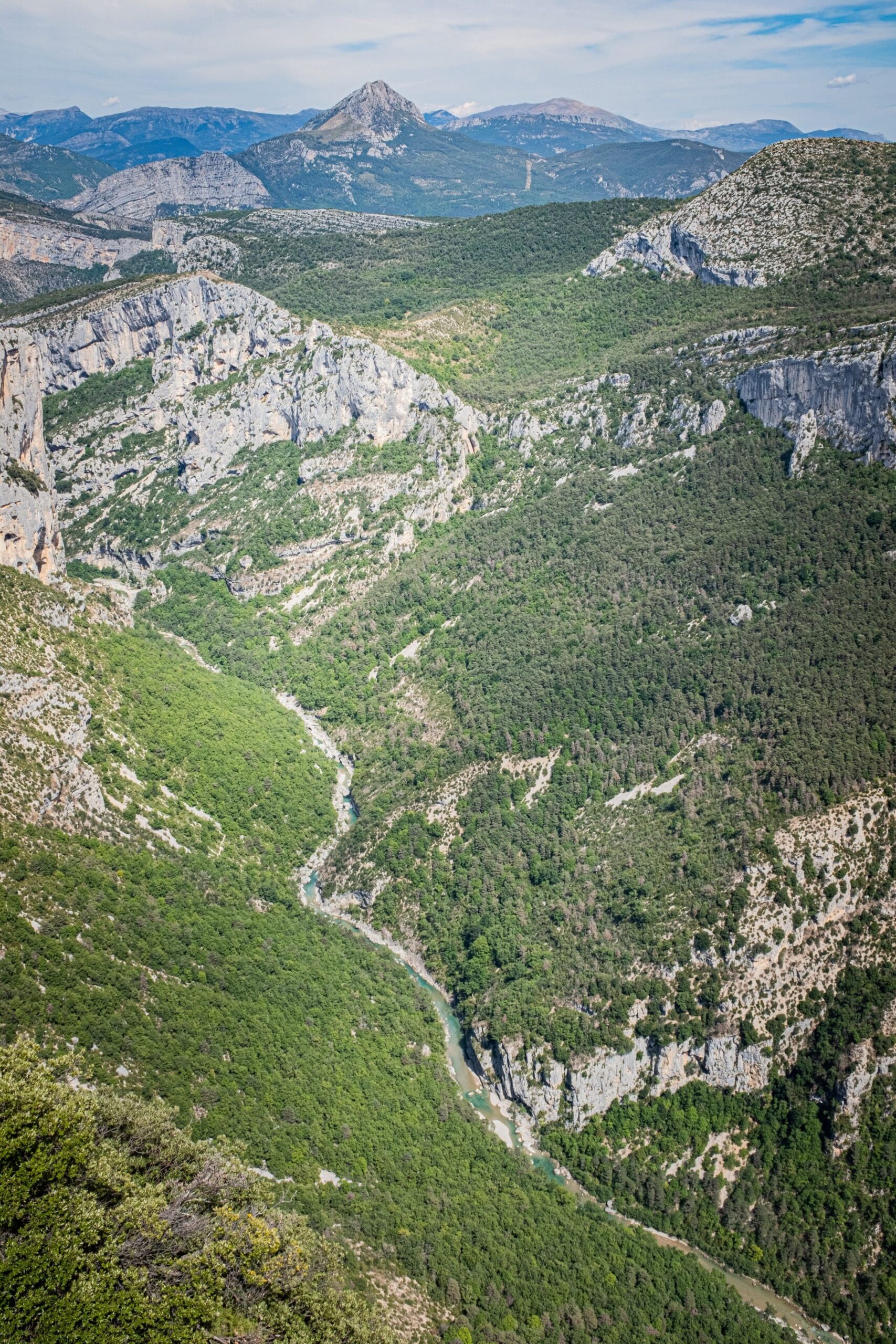
We hitchhike back to Marcel’s place. Yves decides to continue on his way, while I prefer to stay a few days longer. Discussions with my uncle, in whom I have finally found a broad-minded interlocutor, are always captivating. He’s a true philosopher, with a sharp eye for our society and for life. Like me, he abhors conformism and is interested in the depths of things rather than their surface. He offers me a completely new and exciting vision of the world.
Marcel advocates a simple life, in which material possessions play only a minor role. He has posted a number of maxims on the walls of his dining room, one of which particularly strikes me: “I am rich in goods I know how to do without”. While I’ve always been taught that you have to work to earn money, someone assures me that, in the end, very little is enough to live on. And above all to be happy! I need to be alone and take stock. Marcel tells me about a hermitage perched high above Volonne. It’s the ideal place.
[1] Bracts are modified leaves surrounding the flowers.
[2] Forms of marl soil erosion due to overgrazing.
[3] The only non-food product to benefit from an Appellation d’Origine Contrôlée.

